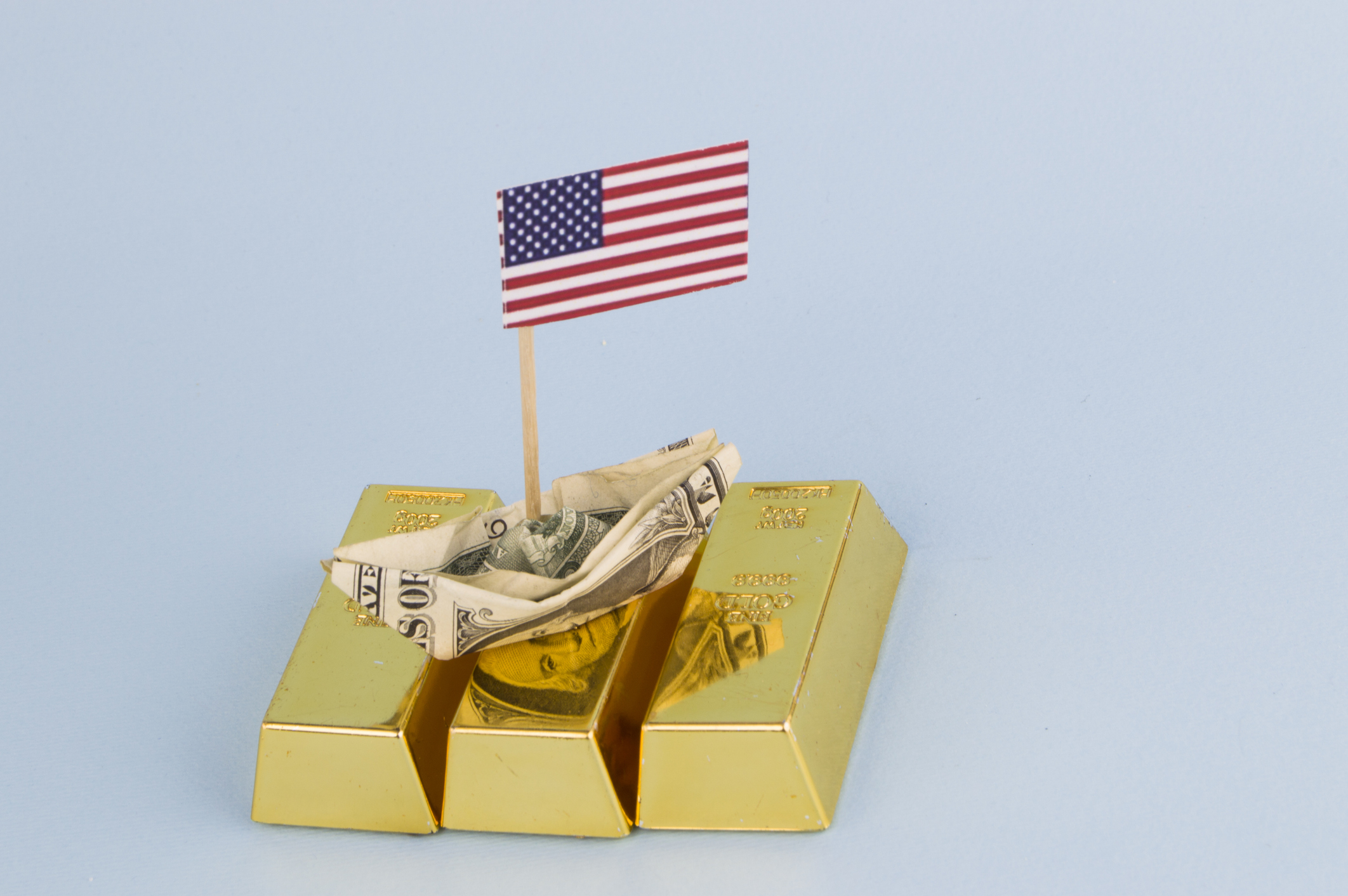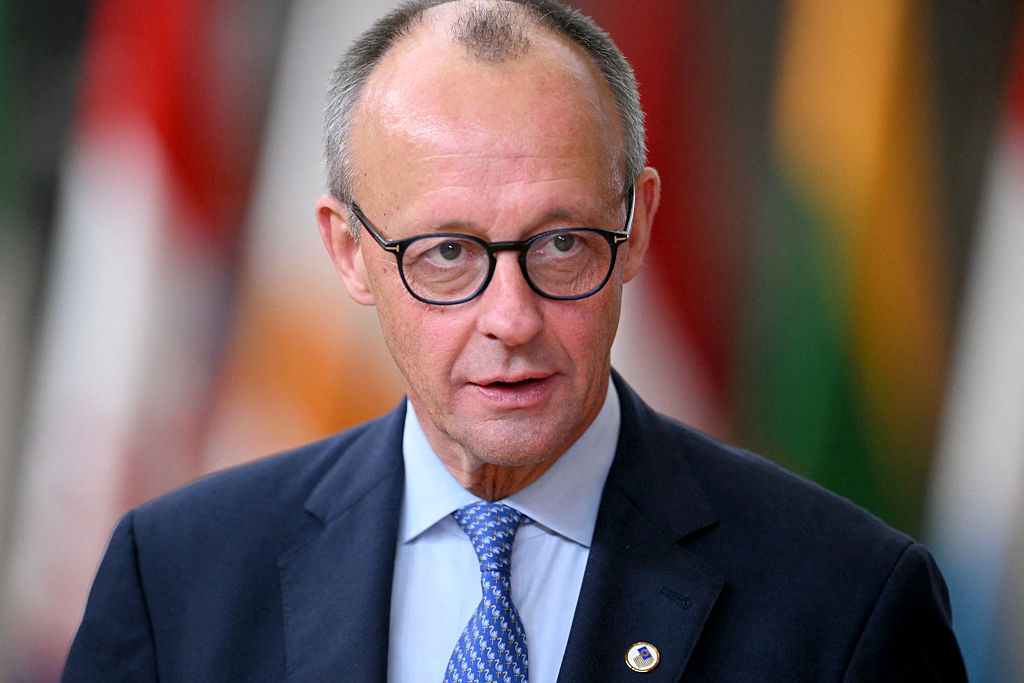What does the US government shutdown mean for gold?
As the Senate’s stalemate brings the US government to a standstill, gold prices are reaching all new heights


Gold prices are surging once again, and this time, they are being spurred on by a constitutional gridlock that has caused the US government to shut down.
Republicans in the Senate had been pushing to pass a bill that would have extended government funding, but failed to attract the Democrat support needed to reach the 60 votes required.
Democrats were holding out for health care policy reforms in order to lend their support to the bill. Without either side having budged, both are now blaming each other for the shutdown, which will see certain parts of the US government temporarily cease to function.
MoneyWeek
Subscribe to MoneyWeek today and get your first six magazine issues absolutely FREE

Sign up to Money Morning
Don't miss the latest investment and personal finances news, market analysis, plus money-saving tips with our free twice-daily newsletter
Don't miss the latest investment and personal finances news, market analysis, plus money-saving tips with our free twice-daily newsletter
This is the first time the US government has closed down since 2018, during Donald Trump’s first term in the White House.
Assuming the shutdown isn’t too lengthy, economists don’t expect it to have a major impact on the US economy. Ryan Sweet, chief US economist at Oxford Economics, for example, has stated that the shutdown won’t change the company’s outlook for US GDP, unemployment or inflation in the near term.
But Sweet did say it could impact the timing of any future Federal Reserve (Fed) rate cuts.
“The Federal Reserve emphasized the September move as an insurance cut,” said Sweet. “A shutdown would likely leave the central bank in a fog about the labor market, fueling support for an October cut rather than risk falling behind and having to cut more later.”
Falling US interest rates are typically a bullish signal for gold investors. But this isn’t the only reason why the US government shutdown is boosting gold prices.
How the US government shutdown is boosting gold prices
The gold price rally has been ongoing since 2024. The US government shutdown is just the latest development that is fuelling its run.
It has helped make September a standout month for gold, though. Gold prices have increased 12% from $3,476 on 1 September to their latest all-time high of $3,895 a month later.
Gold is typically seen as a safe-haven asset. Political instability of any kind tends to see investors turning to the precious metal in order to protect their wealth.
That applies double when it comes to the US, given the country’s dominant position in the global economy and the dollar’s status as the world’s reserve currency.
"The US government shutdown has increased investor uncertainty, delaying Friday’s key jobs data," said Russell Shor, senior market analyst at Tradu.com. "This has strengthened demand for gold as a safe-haven asset, while expectations of further Fed rate cuts have pushed prices higher."
The shutdown is also fuelling pessimism over the US dollar, in which gold prices are typically quoted.
“The dollar slipped again overnight,” said Emma Wall, chief investment strategist at Hargreaves Lansdown on 1 October, the first day of the government shutdown. “The outlook is not positive if previous lockdowns are any indicator.”
This latest fall in the dollar further extends one of the other longer-term drivers of the gold price rally: ‘dedollarisation’.
“Emerging markets have turned away from the US dollar as a store of reserves in order to reduce their dependence on the US, instead favouring gold,” said Wall.
While a weakening dollar inherently pushes up gold prices (as it takes more dollars to buy the same amount of gold), the recent rally has transcended this impact.
“Gold prices recently hit an all-time high in real terms, exceeding the safe-haven asset’s previous inflation-adjusted peak from 1980,” said Shannon Saccocia, chief investment officer, private wealth at Neuberger.
What the US government shutdown means for gold and other investments
While gold prices rose in the days leading up to the shutdown, the reaction of the stock market was more reserved.
The S&P 500 rose for three consecutive sessions up to 30 September, the eve of the government shutdown. At time of writing, S&P 500 futures are down 0.5% on the morning of 1 October, suggesting that these gains are about to reverse.
“Historically shutdowns have been bad for the US dollar, bad for US equities, and bad for bonds too,” said Wall.
If the shutdown becomes drawn out, it could have a negative impact on the US economy.
“The economic costs increase the longer the shutdown drags on,” said Sweet. “Our estimate is that a partial government shutdown reduces GDP growth by 0.1-0.2 percentage points per week.
“For context, a shutdown that lasts the entire quarter, which has never occurred, would reduce Q4 real GDP growth by 1.2-2.4 percentage points.”
Get the latest financial news, insights and expert analysis from our award-winning MoneyWeek team, to help you understand what really matters when it comes to your finances.

Dan is a financial journalist who, prior to joining MoneyWeek, spent five years writing for OPTO, an investment magazine focused on growth and technology stocks, ETFs and thematic investing.
Before becoming a writer, Dan spent six years working in talent acquisition in the tech sector, including for credit scoring start-up ClearScore where he first developed an interest in personal finance.
Dan studied Social Anthropology and Management at Sidney Sussex College and the Judge Business School, Cambridge University. Outside finance, he also enjoys travel writing, and has edited two published travel books.
-
 My 6.5% Nationwide regular saver is due to mature - what are my options?
My 6.5% Nationwide regular saver is due to mature - what are my options?Nationwide’s 6.5% regular saver is due to mature for those who opened one last year. Here is what you can do now to make the most of your savings
-
 Leading European companies offer long-term growth
Leading European companies offer long-term growthOpinion Alexander Darwall, lead portfolio manager, European Opportunities Trust, picks three European companies where he'd put his money
-
 Canada will be a winner in this new era of deglobalisation and populism
Canada will be a winner in this new era of deglobalisation and populismGreg Eckel, portfolio manager at Canadian General Investments, selects three Canadian stocks
-
 Circle sets a new gold standard for cryptocurrencies
Circle sets a new gold standard for cryptocurrenciesCryptocurrencies have existed in a kind of financial Wild West. No longer – they are entering the mainstream, and US-listed Circle is ideally placed to benefit
-
 How Germany became the new sick man of Europe
How Germany became the new sick man of EuropeFriedrich Merz, Germany's Keir Starmer, seems unable to tackle the deep-seated economic problems the country is facing. What happens next?
-
 Cringe Britannia: the decline of the UK's soft power
Cringe Britannia: the decline of the UK's soft powerBritain has long wielded soft power through its commitment to sound political values and the export of high and popular culture. That is now under threat
-
 What MoneyWeek has learnt in the last 25 years
What MoneyWeek has learnt in the last 25 yearsFinancial markets have suffered two huge bear markets and a pandemic since MoneyWeek launched. Alex Rankine reviews key trends and lessons from a turbulent time
-
 Investors need to get ready for an age of uncertainty and upheaval
Investors need to get ready for an age of uncertainty and upheavalTectonic geopolitical and economic shifts are underway. Investors need to consider a range of tools when positioning portfolios to accommodate these changes
-
 'It’s time for Rachel Reeves to secure her legacy'
'It’s time for Rachel Reeves to secure her legacy'Opinion Rachel Reeves has been a dreadful chancellor, and it's hard to see her remaining in office for another whole year. She could at least depart with some dignity
-
 Europe’s new single stock market is no panacea
Europe’s new single stock market is no panaceaOpinion It is hard to see how a single European stock exchange will fix anything. Friedrich Merz is trying his hand at a failed strategy, says Matthew Lynn